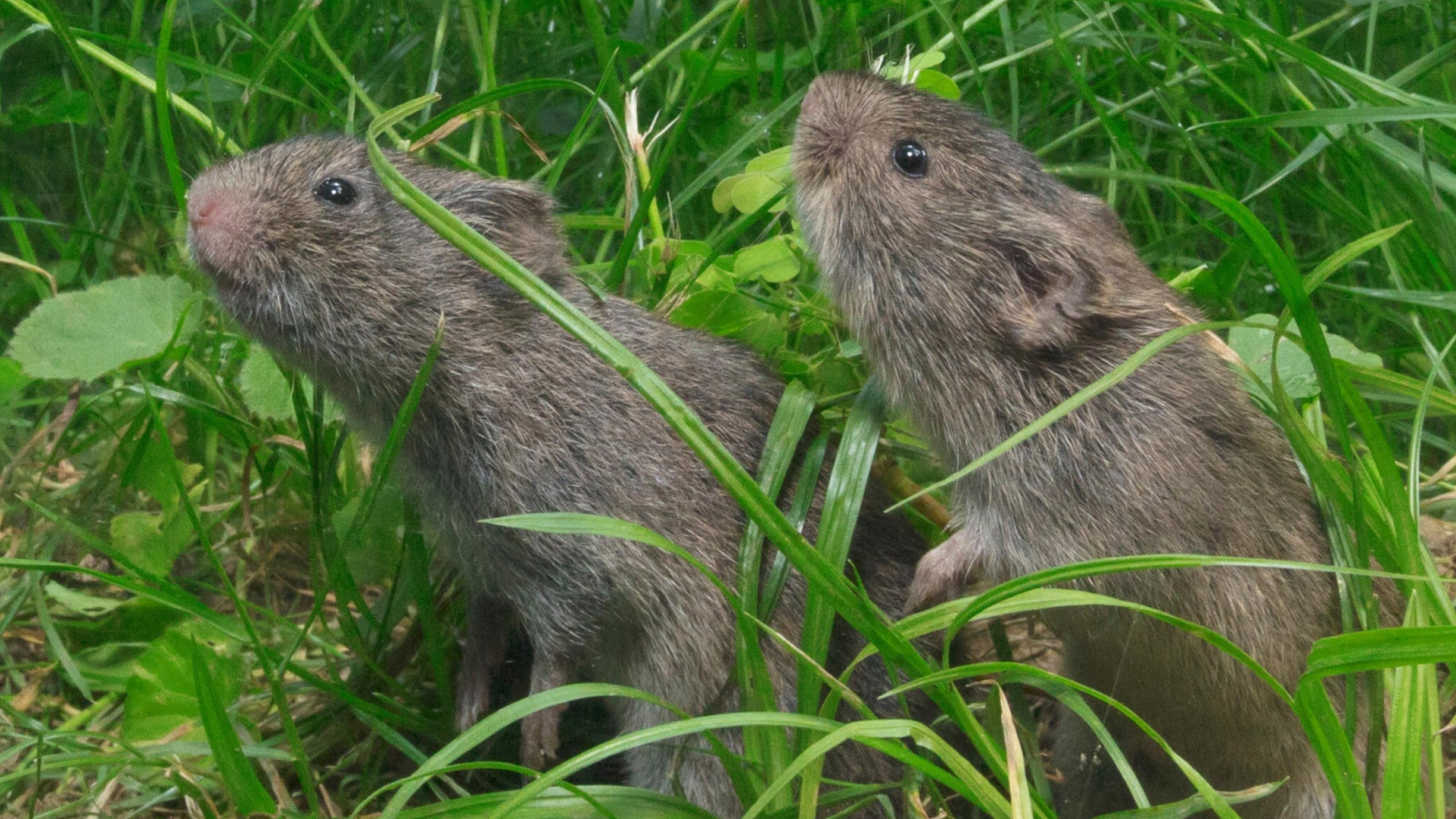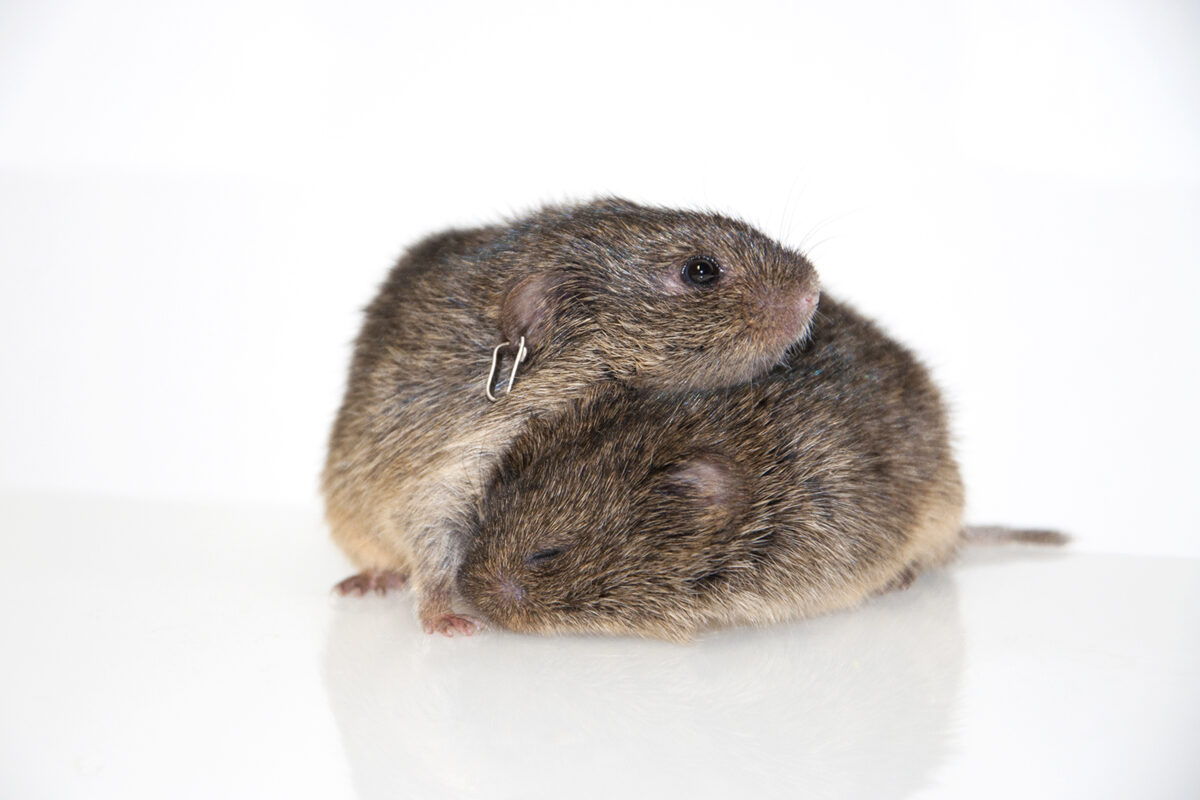Prairie vole orgasms 'rewire' their brains for long-term love
Researchers discover ejaculation in male prairie voles triggers a cascade of neural activity in both sexes that helps them form strong bonds and monogamous relationships.

Scientists have discovered that orgasms rewire the brains of fuzzy little rodents called prairie voles, helping them to bond and form long-term monogamous relationships.
The research provides an insight into how sex, intimacy and the formation of enduring attachments can trigger a cascade of activity in parts of the brain not previously associated with bonding.
"The brain and behavior data suggest that both sexes [of voles] may be having orgasm-like responses, and these 'orgasms' coordinate the formation of a bond," Steven Phelps, a professor of integrative biology at The University of Texas at Austin and senior author of the new study, published Feb. 21 in the journal eLife, said in a statement. "If true, it would imply that orgasms can serve as a means to promote connection, as has long been suggested in humans."
This kind of brain-mapping has not yet been carried out in humans. However, the rodent study paves the way for potential future research into which specific areas of the brain could be linked to bond formation in people.
The team of researchers, led by Phelps, studied prairie voles (Microtus ochrogaster) to create the first brain-wide map of brain areas that are active during mating and pair bonding.
These small, Midwestern rodents are one of the only mammals that form long-term, monogamous relationships, similar to humans, so they can shed light on the neural circuits that underpin these complex social behaviors. That said, the plump rodents do differ from people in some respects — within 30 minutes of meeting, a male and female will often mate repeatedly before quickly going on to form a lifelong bond, according to the statement.
Related: Brain signature of desire uncovered in lovesick rodents, and it may be in people, too
Get the world’s most fascinating discoveries delivered straight to your inbox.
The researchers revealed that distinct patterns of brain activity mark the three stages of vole bonding behavior: mating, bonding and the emergence of a long-lasting bond. This explosion of electrical activity could be seen across 68 distinct brain regions that make up seven large "circuits."
One of the most striking findings was that male ejaculation was strongly linked to neural activity associated with bonding. This finding was unexpected, as it suggests that the act of ejaculation during mating plays a crucial role in activating the neural circuits involved in bond formation.
But importantly, this effect was not isolated to males. Females also exhibited increased bonding-related brain activity when paired with males who reached climax. This suggests that male ejaculation may trigger a shared neural response that then facilitates pair bonding.
Previous research has shown that sex and orgasm triggers the production of oxytocin in humans, a hormone linked to attachment. While the male orgasm is necessary for sexual reproduction, the female orgasm is not, but studies in humans have suggested that female orgasm may have evolved as a mate-selection tool — in other words, human females are more likely to form bonds with mates that bring them to orgasm.
Another intriguing finding from the vole study was the similarity in brain activity patterns between males and females during the bonding process. Because sex hormones like testosterone, estrogen and progesterone are important to sexual behaviors, it was previously thought that male and female brains would use different mechanisms to produce behaviors like mating. But in this study, bonding male and female voles had nearly identical patterns of brain activity.
"Previous research suggested that sex differences in the brain might require distinct neural mechanisms to arrive at the same behavior," Phelps told Live Science. "Overall, our data indicate that the neurobiology of pair bonding is very similar in males and females."
It's not known exactly why some animals, such as prairie voles and coyotes, and not others, form pair bonds and mate for life. It may be because offspring have a greater chance of survival if raised by both the mother and the father.
"Social bonds are the result of brain mechanisms that allow two individuals to help one another," Phelps said. "Shared parental care is the most common form of cooperation. In general, species form pair-bonds when their young require care from both mothers and fathers."

Lydia Smith is a health and science journalist who works for U.K. and U.S. publications. She is studying for an MSc in psychology at the University of Glasgow and has an MA in English literature from King's College London.



